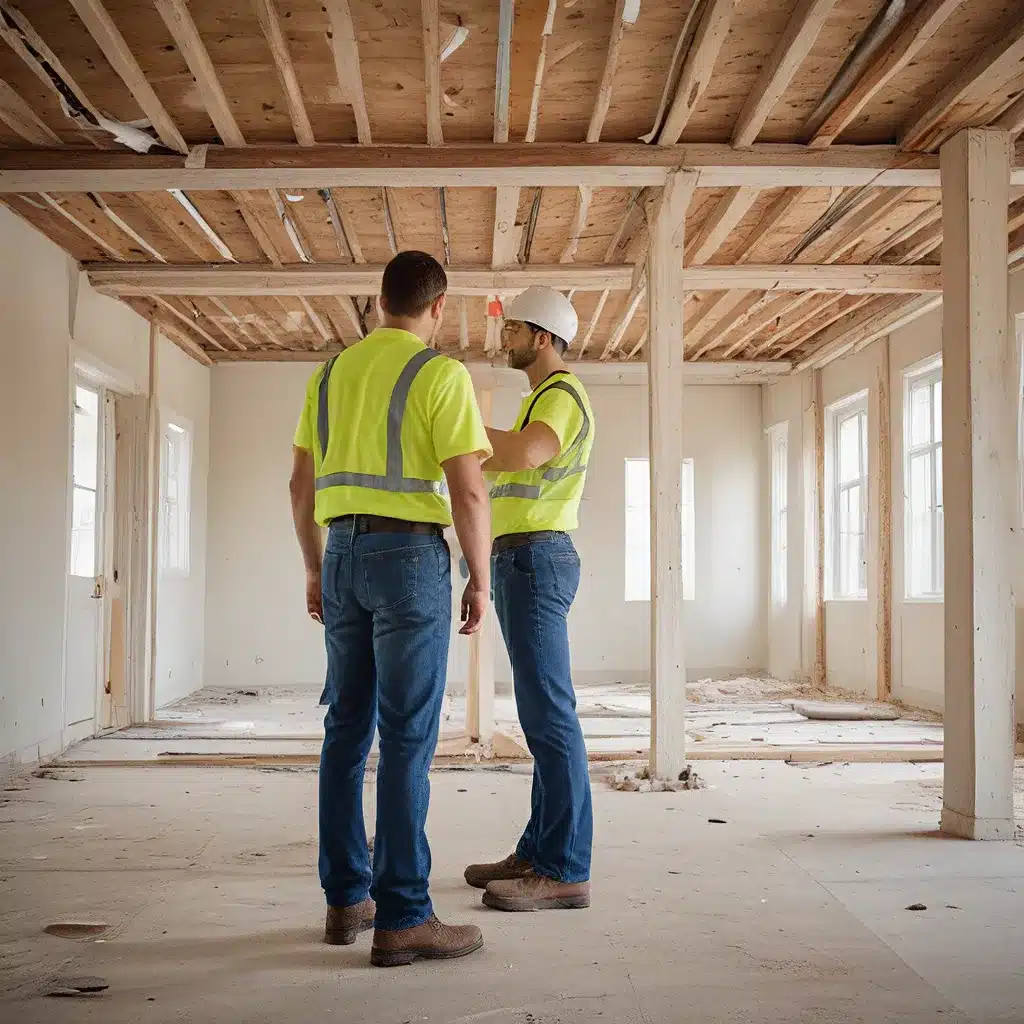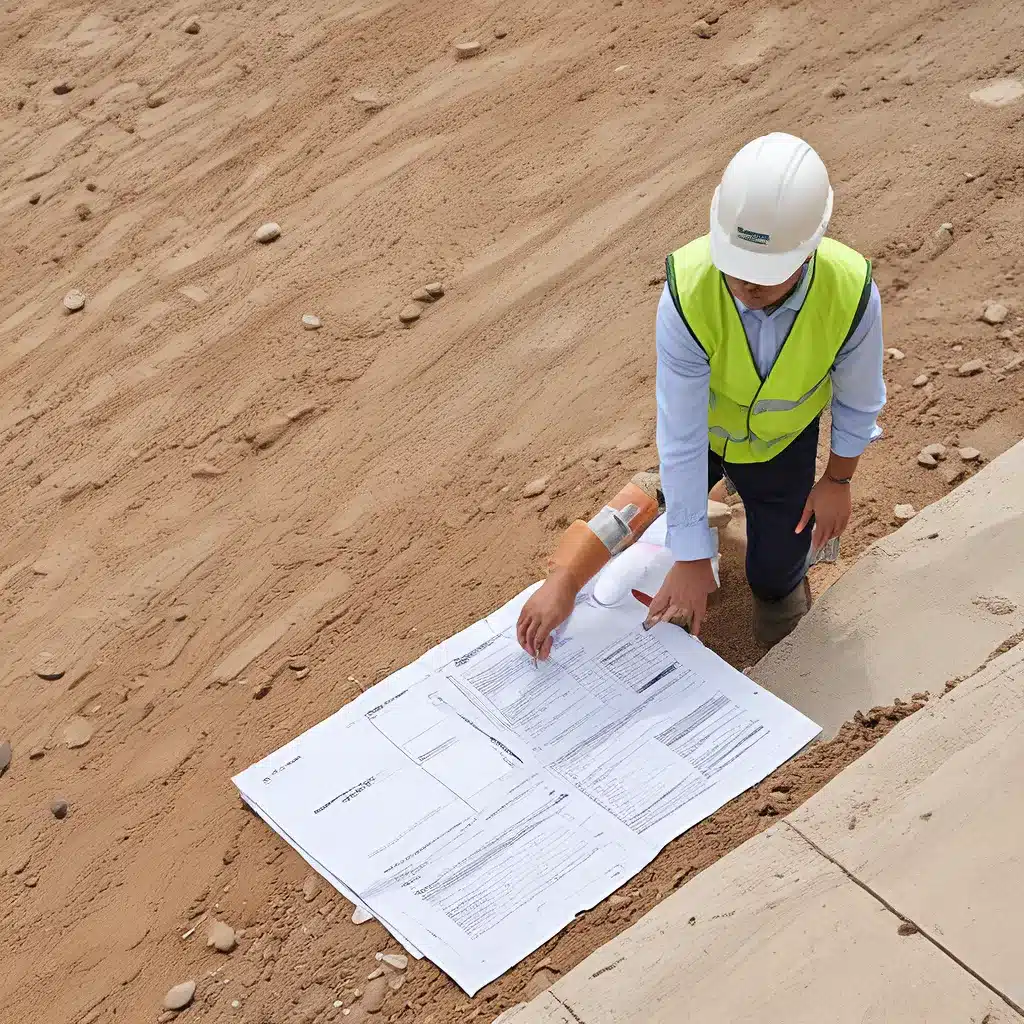
Ah, project closeout – the bane of every general contractor’s existence, am I right? It’s the final hurdle, the last push before the sweet, sweet relief of a job well done. But make no mistake, my friend, this stage is no walk in the park. In fact, it’s where the real magic happens – or, you know, the potential for complete and utter chaos.
The High-Stakes Endgame
Picture this: you’ve poured your heart and soul into a construction project, sweating buckets and pulling all-nighters to get the job done. The end is in sight, and all you can think about is that final paycheck and the chance to move on to the next big thing. But wait, not so fast! Project closeout is lurking around the corner, ready to throw a wrench in your plans.
You see, the stakes of closeout can feel downright astronomical. The project owner is itching to move into their shiny new building, open for business, or put it up for sale. And you, the trusty general contractor, you’re desperate to collect that final payment and secure your spot for future projects. But with so many variables in play, closeout has the potential to become a veritable minefield of stress and unexpected delays.
Preparation is Key
Now, I know what you’re thinking – “Can’t we just wing it and hope for the best?” Well, my construction compadre, I’m here to tell you that’s a surefire recipe for disaster. The key to a smooth project closeout is starting the planning process as early as humanly possible. I’m talking from the moment you break ground, folks.
You see, there are so many moving parts to closeout – warranties, documents, inspections, training, the dreaded punch list, and the list goes on. And if you wait until the last minute to start tackling these tasks, you’re setting yourself up for a world of hurt. Trust me, I’ve been there, frantically chasing down subcontractors for that one elusive warranty document while the owner is breathing down my neck.
But a general contractor who plans ahead? They’re like a superhero in a hard hat, swooping in to save the day. By collecting all those crucial documents and staying on top of the ever-evolving punch list throughout the project, they make closeout a breeze. It’s all about that organization, baby – keeping track of what’s been done and what still needs to be checked off the list.
The Closeout Checklist
Alright, let’s dive into the nitty-gritty of project closeout, shall we? It’s a multi-step process, but fear not, I’ve got your back. Here are the key elements you need to tackle:
-
Substantial Completion: This is the point where you and the owner agree that the building is ready for its intended use, even if a few minor tasks remain. Get that AIA G-704 Certificate of Substantial Completion and let the real fun begin.
-
The Punch List: Ah, the punch list – the bane of every contractor’s existence. This is where you and the owner compile a list of items that still need to be addressed, from incomplete work to nagging defects. Negotiating and resolving these punch list items can be a real test of your problem-solving skills, my friend.
-
Closeout Documentation: Brace yourself, because this is where the paperwork avalanche begins. We’re talking drawings, manuals, warranties, affidavits, and more. The key is to create a system that makes this mountain of documents easy to navigate and search.
-
Final Inspections: Time to call in the big guns – the local building authority. They’ll be the ones to determine if your shiny new structure is up to code and ready for occupancy. Cross your fingers and hope for a glowing review!
-
Training and Transition: Don’t forget, the owner’s team needs to know how to operate and maintain all those fancy new systems and equipment. Schedule some hands-on training sessions and make sure they’ve got a solid understanding before handing over the keys.
-
Final Payments: Ah, the moment we’ve all been waiting for – time to get that last paycheck! But wait, there’s a catch. Many contracts link final payment to the completion of the closeout process, so make sure you’ve dotted all your i’s and crossed those t’s.
-
Utility Transfers: Don’t forget about the utilities, my friends. You’ll need to work with the local providers to transfer those accounts over to the owner, and trust me, this can be a whole process in itself.
-
Certificate of Occupancy: The grand finale! This legal document certifies that your building is safe and ready for use, giving the owner the green light to move in and start their operations.
Phew, that’s a lot to keep track of, isn’t it? But don’t worry, with a solid plan and a little bit of that construction magic, you can conquer this closeout challenge like a true champion.
The Collaborative Closeout
Now, I know what you’re thinking – “But wait, I can’t do all this on my own!” And you’re absolutely right. Project closeout is a collaborative effort, my friends, requiring seamless communication and coordination between the general contractor, the owner, the design team, and all those subcontractors.
As the general contractor, you’re the maestro, leading the charge and making sure everyone is on the same page. Your subcontractors need to understand the required documentation and have a clear timeline, so they can do their part without any last-minute scrambling. And the owner? Well, they need to be in the loop every step of the way, so they know what to expect and when to expect it.
Because let me tell you, nothing can derail a project closeout quite like a frustrated owner who’s kept in the dark. And when those delays start to pile up, well, let’s just say the consequences can get ugly. Liquidated damages, anyone?
Lessons Learned and Lasting Impressions
But you know what they say, every cloud has a silver lining. And in the case of project closeout, that silver lining comes in the form of the all-important project debrief. This is your chance to gather the key players, reflect on what went well (and what didn’t), and use those insights to improve your process for the next job.
After all, the way you handle the closeout of a project can leave a lasting impression on the owner. And let me tell you, that impression can make or break your chances of snagging that sweet, sweet repeat business. So, don’t be shy – embrace those project debriefs, take ownership of any missteps, and show the client that you’re the kind of general contractor they can count on, even in the eleventh hour.
And when it comes to storing those project documents, well, you better believe that’s a task that extends far beyond the final handover. Those manuals, warranties, and as-built drawings? They’re the keys to the kingdom, my friends, holding the answers to any future questions or issues that may arise. So, keep them organized, accessible, and ready to go – because you never know when the owner might come knocking.
The Grand Finale
Ah, project closeout – it’s the grand finale of the construction journey, the last hurdle standing between you and that well-deserved pat on the back. And let me tell you, when you nail it, it’s a feeling like no other. The owner is thrilled, the subcontractors are satisfied, and you, my friend, you’re the hero of the day.
But don’t forget, even when the curtains have closed on this particular project, the work isn’t quite done. There are still warranties to track, debriefs to conduct, and lessons to be learned. After all, as a general contractor, your reputation is on the line with every job you take on. And trust me, when you handle that closeout process with the care and diligence it deserves, you’ll be setting yourself up for success on the next big adventure.
So, buckle up, construction warriors, and get ready to conquer the almighty project closeout. With a little planning, a lot of communication, and a healthy dose of that construction magic, you’ll be well on your way to cementing your status as the go-to general contractor in town. And who knows, maybe you’ll even have a little fun along the way. After all, what’s a construction project without a few unexpected twists and turns, right?
Reading General Contractor – Building Excellence, One Project at a Time.
Related posts:
No related posts.




